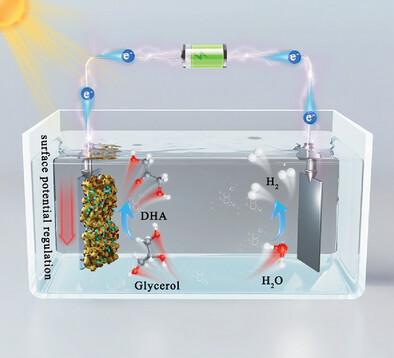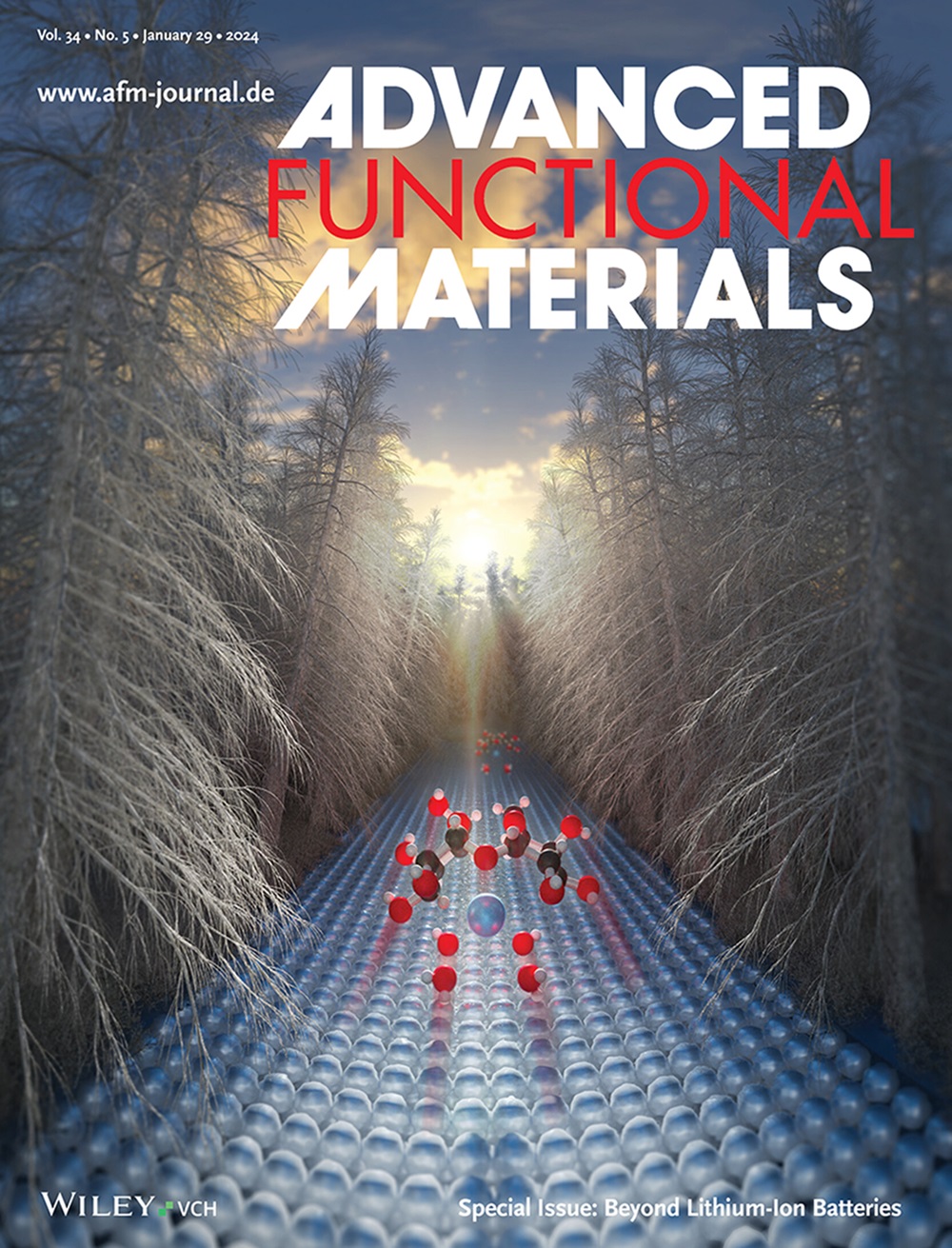在 BiVO4/CoOx/Au 光阳极中通过界面电位调节表面氧价态以增强甘油到二羟基丙酮的选择性光电化学氧化作用
IF 18.5
1区 材料科学
Q1 CHEMISTRY, MULTIDISCIPLINARY
引用次数: 0
摘要
将生物质转化为具有工业价值的化学品的光电化学概念,为取代通常与光阳极相关的低价值氧进化提供了一个引人注目的战略。本文提出了一种通过调节表面氧价态来操纵表面电位的方法,证明这种方法能有效提高甘油到二羟基丙酮(DHA)的选择性光电化学氧化。这涉及同时建立一个 BiVO4/CoOx 异质结和一个 BiVO4/Au 肖特基结,目的是微调 BiVO4 光阳极的表面电位,改善其电荷载流子分离和界面转移动力学。与可逆氢电极(RHE)相比,BiVO4/CoOx/Au 光阳极在 1.23 V 时的光电流密度为 6.15 mA cm-2。同时,选择性甘油氧化效率实现了 339.74 mmol m-2 h-1 的 DHA 演化率和超过 60% 的选择性。实验和理论分析都强调了表面电位在甘油和 DHA 吸附与解吸过程中的关键作用。此外,由于 CoOx 和金修正物的表面电位降低,涉及中间碳物种的脱氢限速步骤的吉布斯自由能也随之降低。这项工作展示了一种通过表面电位调节界面分子吸附/解吸来设计甘油氧化催化剂的方法。本文章由计算机程序翻译,如有差异,请以英文原文为准。

Modulating Surface Oxygen Valence States via Interfacial Potential in BiVO4/CoOx/Au Photoanode for Enhanced Selective Photoelectrochemical Oxidation of Glycerol to Dihydroxyacetone
The concept of photoelectrochemical conversion of biomass into industrially valuable chemicals presents a compelling strategy to supplant the lower-value oxygen evolution typically associated with photoanodes. Here, a surface potential manipulation method by regulating the surface oxygen valence states is put forward, which is demonstrated to be effective in enhancing the selective photoelectrochemical oxidation of glycerol to dihydroxyacetone (DHA). This involves the concurrent establishment of a BiVO4/CoOx heterojunction and a BiVO4/Au Schottky junction, aiming to fine-tune the BiVO4 photoanode's surface potential and improve both its charge carrier separation and interfacial transfer kinetics. The BiVO4/CoOx/Au photoanode exhibits a photocurrent density of 6.15 mA cm−2 at 1.23 V versus reversible hydrogen electrode (RHE). Meanwhile, selective glycerol oxidation efficiency achieves a DHA evolution rate of 339.74 mmol m−2 h−1 and a selectivity exceeding 60%. Experiments and theoretical analysis underscore the pivotal role played by the surface potential in mediating glycerol and DHA adsorption and desorption processes. Additionally, the diminished surface potential attributed to the CoOx and Au amendments is responsible for the decreased Gibbs free energy of the dehydrogenation's rate-limiting step involving the intermediate carbon species. This work demonstrates a method to design glycerol oxidation catalysts by modulating the interfacial molecular adsorption/desorption by surface potential regulation.
求助全文
通过发布文献求助,成功后即可免费获取论文全文。
去求助
来源期刊

Advanced Functional Materials
工程技术-材料科学:综合
CiteScore
29.50
自引率
4.20%
发文量
2086
审稿时长
2.1 months
期刊介绍:
Firmly established as a top-tier materials science journal, Advanced Functional Materials reports breakthrough research in all aspects of materials science, including nanotechnology, chemistry, physics, and biology every week.
Advanced Functional Materials is known for its rapid and fair peer review, quality content, and high impact, making it the first choice of the international materials science community.
 求助内容:
求助内容: 应助结果提醒方式:
应助结果提醒方式:


